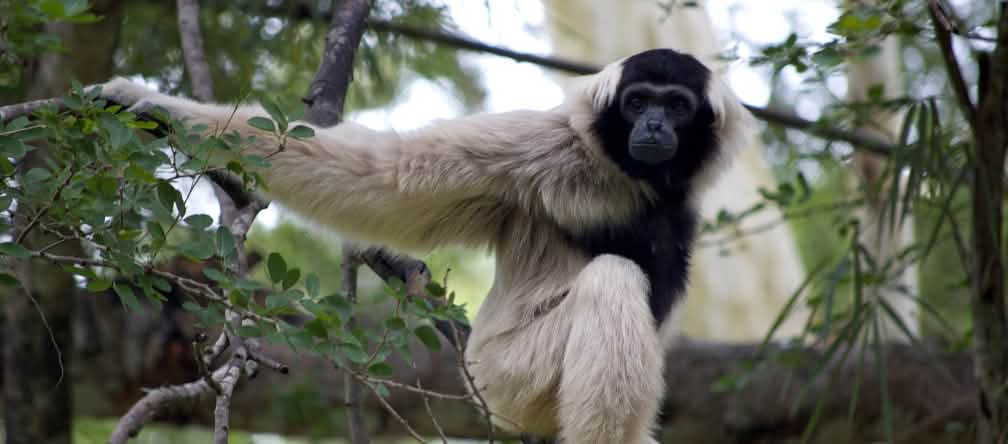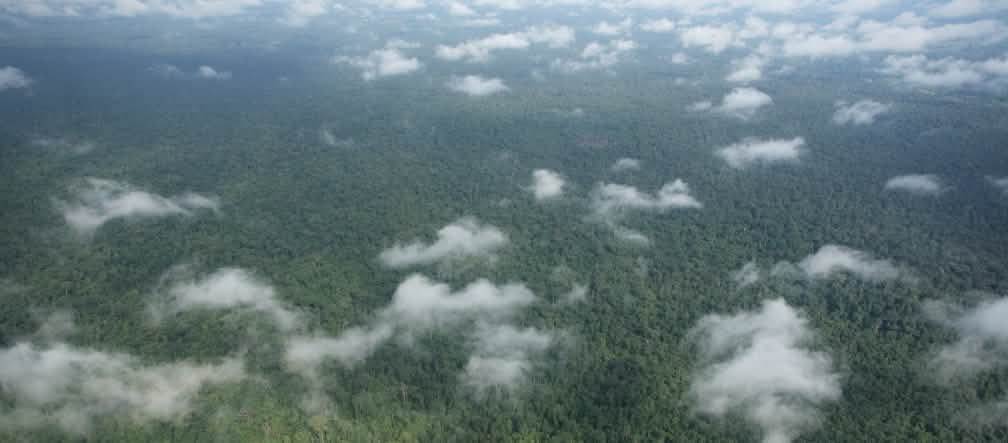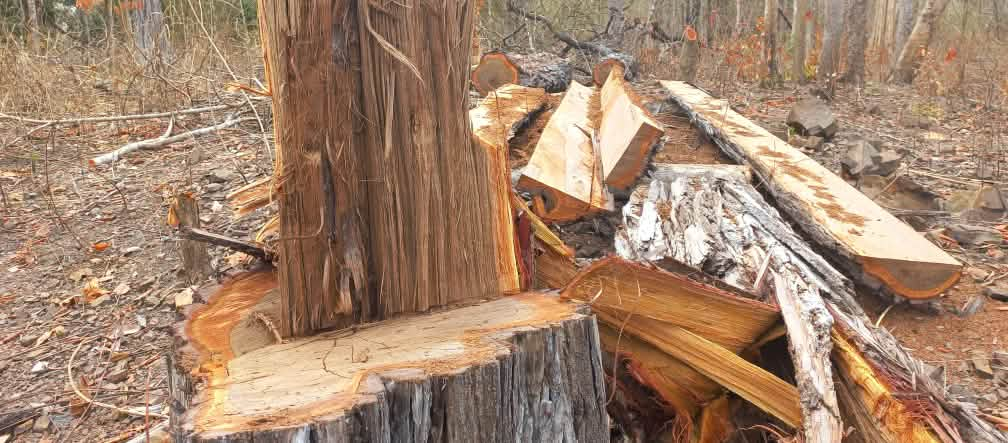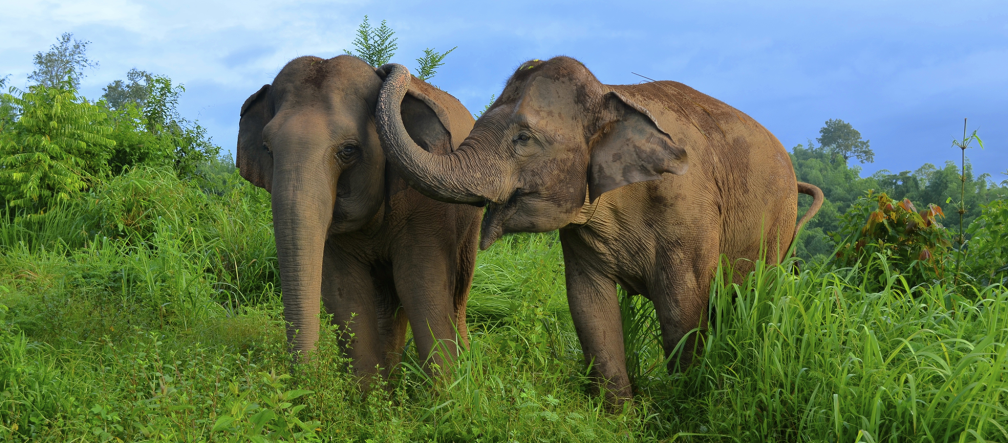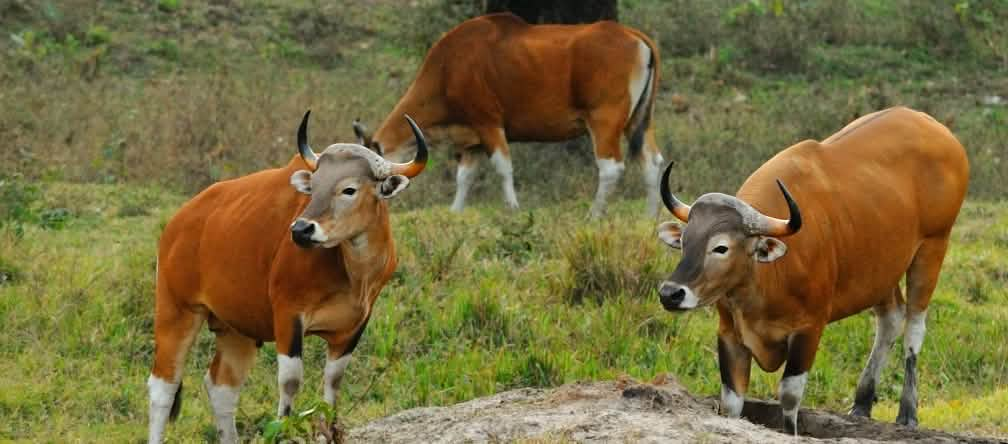Cambodia: Save Prey Lang Forest!
Prey Land is the largest and most significant lowland rainforest in the country. Because of its rich biodiversity, the Cambodian government designated it a protected area in 2016. However, concessions for agriculture and industry are still being granted. Support the people’s call to enforce environmental laws.
To: Prime Minister Hun Manet
“Protect Prey Lang forest and ensure that current environmental law is enforced!”Asian elephants are rarely seen in the Prey Lang forest these days—only a small herd still inhabits the area. Prey Lang is also home to banteng cattle and black gibbons, as well as many other endangered species, including the giant ibis, the Sunda clouded leopard, pangolins, and Malayan bears.
Prey Lang is the last large evergreen lowland rainforest on the Southeast Asian mainland. The forest covers nearly 500,000 hectares in northern Cambodia.
It is not only home to a rich variety of animal and plant species, but also to the Indigenous Kuy people and other communities who have always lived in and relied on the forest. The forest provides them with food, water, medicine, and income. Their culture and spirituality are also closely connected to nature.
Due to its high biodiversity, the Cambodian government officially declared Prey Lang a wildlife sanctuary in 2016. Nevertheless, more than 48,700 hectares of forest have been destroyed since 2018, according to satellite data analyzed by Global Forest Watch.
Illegal logging and the granting of concessions to companies, especially for agricultural and industrial development, are the main causes of this dramatic forest loss. In January 2025, the government awarded a land concession covering 99 hectares of the Prey Lang forest to KP Cement Industry Co. Ltd. While this area may seem relatively small, young people, indigenous groups, and citizens across the country are now using it as an opportunity to launch their global campaign, “Save Prey Lang!” and put pressure on the government.
We are raising our voices because we believe that Prey Lang belongs to all of us, and its survival depends on the courage and unity of the people.”
Rainforest Rescue supports their appeal with this petition—please add your voice!
Start of petition: 03/06/2025
About Prey Lang
Prey Lang is the last major lowland rainforest on the Southeast Asian mainland. The forest covers approximately 5,000 square kilometers and is located west of the Mekong River in northern Cambodia. It is home to 250,000 people, many of whom are from the indigenous Kuy community, as well as numerous threatened animal and plant species.
Illegal logging and industrial agriculture pose major threats to the forest, which has been dramatically deforested over the past 15 years.
Biodiversity
Prey Lang is home to 530 plant and tree species, 11 of which are listed on the IUCN Red List of Threatened Species.
The Prey Lang forest has a diverse composition of plant species and distinct types of vegetation. Because of this unique composition, the forest is considered to be of extremely high ecological significance.
Scientifically, Prey Lang is classified as a biodiversity hotspot. The forest contains seven different types of rainforest, including rare primary evergreen forest and evergreen marsh forest. These forest types exist in Prey Lang in their original condition, undisturbed by human activities, and they contain a large number of rare and endangered species.
In 2007, the University of Copenhagen conducted an assessment of the biodiversity and ecological importance of Prey Lang. Thirty-one threatened tree species were recorded. Nine were registered on the International Union for Conservation of Nature (IUCN) Red List, while a further 22 were listed in the UNEP-WCMC Trees Database of threatened trees and other trees of conservation concern.
Wildlife
The forest is home to 393 animal species, including 55 that are globally threatened. Prey Lang supports a wide range of mammals, birds, bats, and reptiles. Several of Prey Lang’s animal species are threatened because their natural habitats are being destroyed. Among the most threatened species are:
- the Asian elephant
- the banteng (wild cattle)
- the pileated gibbon
Asian elephants are rarely seen in Prey Lang, but a small herd—the last in Cambodia—still lives in the forest. They are hunted for ivory and require large areas of undisturbed land to survive. The banteng and the pileated gibbon are also still found in Prey Lang, but loss of natural habitats is increasingly threatening these species.
Prey Lang is also home to several other threatened animals, including the Malayan sun bear, the Asian giant pond turtle, the Malayan box turtle, the Sunda clouded leopard, the Asiatic wild dog, and 15 rare bird species.
Wildlife sanctuary
In May 2016, Cambodian Prime Minister Hun Sen signed a sub-decree designating 4,320 square kilometers of Prey Lang as a wildlife sanctuary. The sanctuary includes forest areas in Stung Treng, Kampong Thom, Kratie, and Preah Vihear.
According to the sub-decree, the purpose is “to ensure the maintenance of wildlife habitats and ecosystems and to protect and conserve plants, forest, and all kinds of globally endangered animals and species.”
With this sub-decree, the Cambodian government officially committed, both in policy and in law, to protect the Prey Lang forest.
Water
Prey Lang is a rainforest and is closely linked to the water ecosystem in the surrounding areas. This means that deforestation has several severe consequences for local communities that depend on water resources from the forest.
Prey Lang lies within several watersheds and plays a key role in regulating water and sediment flow to Cambodia’s largest lake, the Tonle Sap Lake, and the Mekong River. Millions of Cambodians depend on the Tonle Sap Lake for fisheries and as a water resource.
The forest also retains water, making a major contribution to groundwater regulation during the dry season. In this way, Prey Lang serves as a vital source of water for Cambodia’s rice-growing region and for the Mekong Delta. The forest is crucial for retaining water for irrigation and ensuring a stable flow in the water cycle.
The Indigenous Kuy
More than 250,000 people live in the 340 villages in and around Prey Lang. Most identify as Indigenous Kuy. The Kuy are an Indigenous ethnic group based in northern Thailand, southern Laos, and northern Cambodia, with their own spoken language.
Prey Lang means “our forest” in the Kuy language. The forest is an important part of Kuy culture and spiritual life and also serves as a vital resource for Kuy families’ livelihoods.
The Kuy people are highly vulnerable to changes in the water cycle and natural resources. All communities primarily depend on the land, farming rice crops. Many families also use the forest as a source of income. They tap resin from trees in the forest, which is then sold at market.
Source: Prey Lang Community Network: https://preylang.net/
Video from our partner organization Mother Nature Cambodia about the business empire of Chhay Ching Heang, which includes KP Cement Industry Co. Ltd. Two of his 41 companies are linked to the family of Prime Minister Hun Manet and other powerful figures in the government:
Facebook: https://www.facebook.com/share/v/16ctnHEs5r/?mibextid=wwXIfr
Instagram: https://www.instagram.com/p/DKmN0VgBjI_/
Khmer audio with English subtitles.
Further information:
https://e360.yale.edu/features/preah-roka-prey-lang-logginghttps://www.globalforestwatch.org/
http://news.mongabay.com/2023/12/immense-body-of-knowledge-at-stake-in-cambodias-prey-lang-as-deforestation-soars/
https://news.mongabay.com/video/the-truth-about-cambodias-prey-lang-sanctuary-chasing-deforestation
To: Prime Minister Hun Manet
Dear Mr. Prime Minister,
We, the undersigned, support the following letter from young people and citizens in Cambodia and ask you to implement their demands:
The Prey Lang Forest is one of the last remaining lowland evergreen rainforests in Southeast Asia. It is exceptionally biodiverse and is home to Indigenous communities who depend on the forest for food, traditional medicine, and their cultural and spiritual identity.
Prey Lang has been recognized as a wildlife sanctuary since 2016 and designated as a protected area under Cambodian law—489,663 hectares are now under protection. Nevertheless, the forest is being severely damaged by illegal logging and the granting of concessions for agriculture and industry.
As Cambodian youth and citizens, we are uniting to protect it. We are not waiting for permission to take action. We demand justice, accountability and long-term protection for our forests and communities.
Please take urgent, concrete action to save Prey Lang before it is too late. We call on you to:
- Cancel the 99-hectare economic land concession for KP Cement Industry Co. Ltd.
- Halt illegal logging immediately and ensure strict enforcement of environmental laws in the Prey Lang Wildlife Sanctuary.
- Respect the environmental rights of local people, lift the ban on the Prey Lang Community Network and other Indigenous groups from entering the forest, and allow them to participate in forest patrols to stop illegal logging.
- Conduct transparent investigations and hold officials and companies involved in forest crimes accountable.
- Protect Indigenous peoples’ land rights to ensure that local communities are recognized as stewards of the forest.
- Implement long-term conservation measures that prioritize ecological integrity over short-term economic gain.
Prey Lang is not just a forest; it is a living heritage of Cambodia. It is a source of life, identity and resilience.
Yours faithfully,
Between 2001 and 2024, Prey Lang lost a total of 93,000 hectares of forest, or 22 percent of its area. This is shown by satellite data analyzed by Global Forest Watch.
